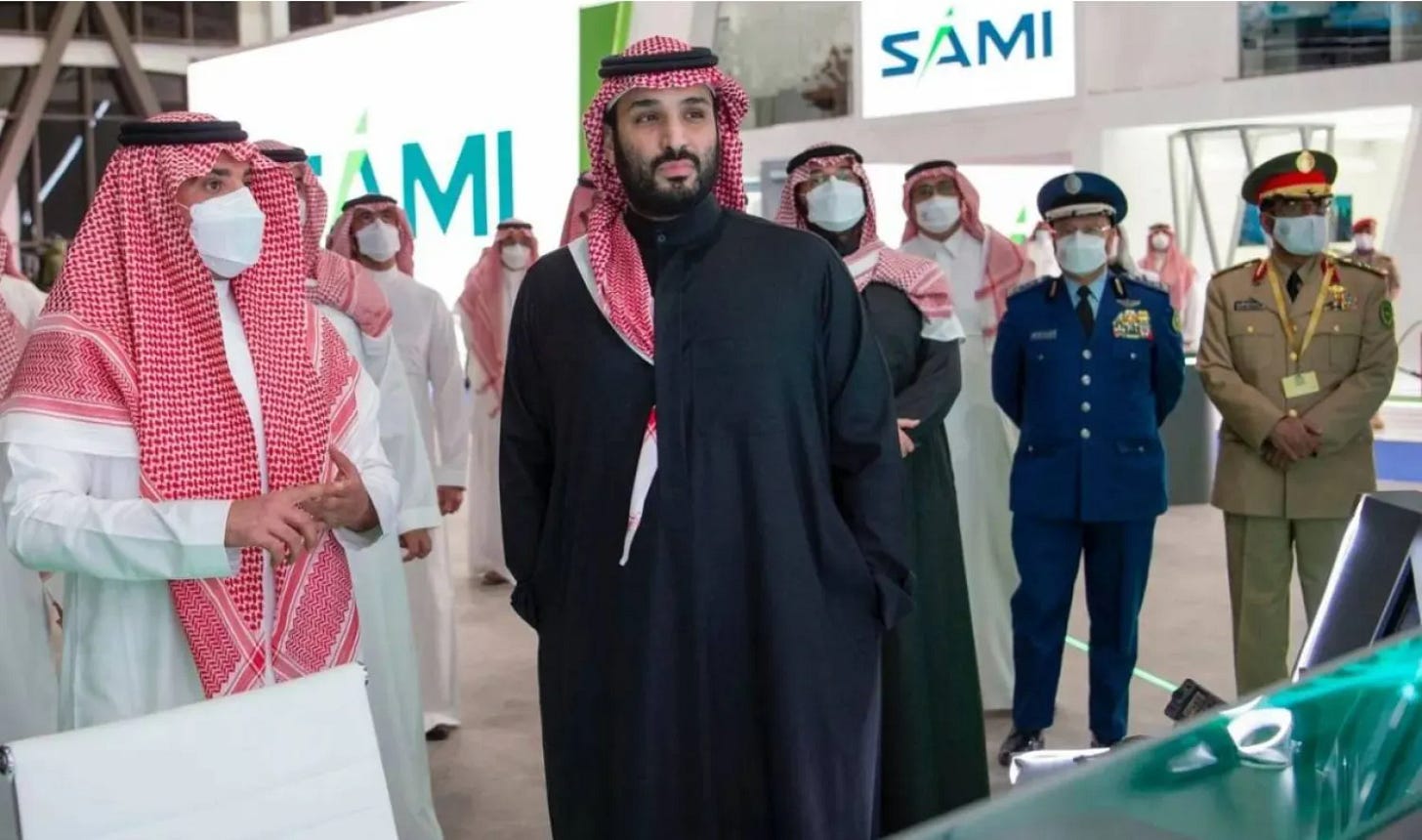Saudi Arabia's Strategic Role in Israel’s Gaza Occupation Vision
Framing the end of Palestine as a prerequisite for regional prosperity serves to distract from the core issue: Israeli occupation.
On 6 February, Saudi Arabia’s Crown Prince Mohammed bin Salman announced the launch of the King Salman Automotive Cluster in King Abdullah Economic City (KAEC), which will serve as a key development in the Kingdom's push for economic diversification and technological advancement. This initiative aligns with Saudi’s Vision 2030: the blueprint of the Kingdom's economic diversification goal, where Saudi becomes a hub for sustainable energy and automotive manufacturing. KAEC’s development also parallels the recently resurfaced Gaza 2035 vision outlined by the office of the Israeli Prime Minister last year, which position Gaza as a hub for mineral processing and electric vehicle manufacturing. According to PM Benjamin Netanyahu's plan, Saudi Arabia’s NEOM would be connected to Gaza through a railway system, facilitating the transport of Saudi natural resources to the European market. While the Kingdom has not officially confirmed its involvement in the Trump-endorsed vision for Gaza, Riyadh is preparing for this trade route irrespective of who holds control over the Gaza Strip.
Automotive Sector Driving Saudi-Gaza Integration
In 2017, the Saudi Ministry of Investment (MISA), previously known as the Saudi Arabian General Investment Authority, announced the launch of five megacity projects aimed at decreasing the country’s reliance on oil. Of the five, of which NEOM is one, KAEC is the only one currently operational: the artificial city is located on the Red Sea coast and, as of last year, has a population around 10,000. In line with the Kingdom’s other ambitious plans, Saudi Arabia expects the city to reach a population of 2 million by its projected completion in 2035. As of now, the city is approximately 15% complete. Additionally, the city aligns with China’s Belt and Road Initiative, as it lies on the maritime Silk Road route of the plan. This strategic location sets it up for investments from both Eastern and Western markets, positioning it to benefit from any dominating trade route.
Automotive manufacturing is set to play a pivotal role in driving non-oil economic growth for the megacity, with the recently announced King Salman Automotive Cluster marking a significant step toward achieving this goal. Expected to contribute $24.5 billion to the GDP by 2035, the cluster will serve as a hub for both local and international car companies, including prominent names such as Ceer, Lucid Motors, Hyundai Motor, and Pirelli. While Saudi Arabia currently relies heavily on importing cars, the Kingdom aims to shift towards domestic production, with plans to manufacture 500,000 electric vehicles annually by 2030, further solidifying its position in the global automotive market. The Kingdom’s post-oil future depends on the success of such projects, and Israel’s aims to utilise the Arab economic integration visions to prolong the occupation in the Levant (Syria, Lebanon, Palestine) but also ensure the state's existence by embedding it into the regional economy.
Outlined in Netanyahu’s Gaza Vision 2035, in a document titled ‘From Crisis to Prosperity – Plan for the Transformation of Gaza Strip’, Saudi Arabia alongside Egypt plays a key role in Gaza’s future within the Abraham Accords framework. Identified as one of the main countries that will contribute to Gaza's reconstruction, governance, and future trade relations, Saudi stands to gain access to the Mediterranean Sea through railway lines, pipelines, and ports in the ongoing Gaza-Arish-Sderot Free Trade Zone. Additionally, the Kingdom serves as a counter to China’s electric vehicle sector in the region. According to the document, Gaza will also become a manufacturing hub for raw materials and metals worth $1.3 trillion to be extracted from Saudi soil in the next decade.
Saudi 2030, Gaza 2035
By supporting such projects, Israel and the US are effectively externalising the cost of the occupation of Palestine to Arab countries, particularly Saudi Arabia, as it is the richest country in the region. By aiming to integrate Gaza into Saudi’s broader economic diversification plans, Israel and the US are politically undermining Palestinian national aspirations and replacing them with economic ambitions tied to Saudi national goals. Even in the case of Jordan, the US and Israel are following the same playbook, pressuring Jordan to bear the cost of the annexation of the West Bank by Israel. Similarly, Egypt’s economic needs are being exploited to extract political and material concessions that it would otherwise never make.
Framing the end of Palestine as a prerequisite for regional prosperity serves to distract from the core issue: Israeli occupation. It is not Gaza or Hamas that drives the ongoing conflict, but Israel’s relentless territorial expansion, which continues unchecked despite peace-making efforts.



